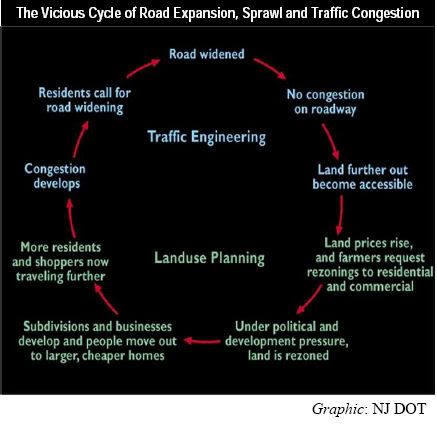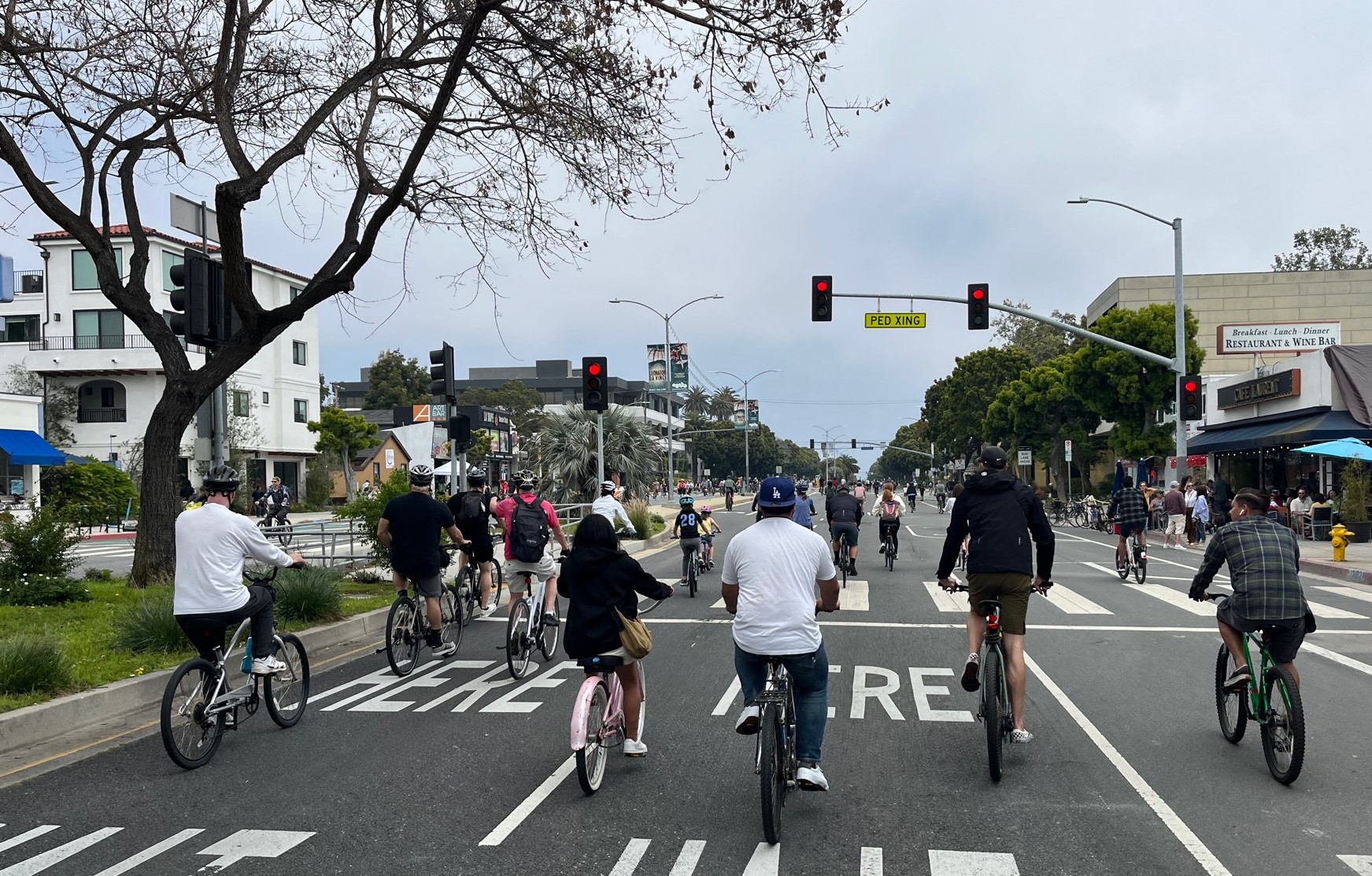For example, maybe we could try to have fewer cars on the road?
In the press event on the $150 million plan to reduce congestion by improving traffic signals in LA, both Governor Schwarzenegger bragged about how the new system will reduce congestion and greenhouse gas emissions. The press release from the Governor’s office quotes him as saying, "And, synchronizing traffic lights means we can cut greenhouse gas emissions from idling vehicles so we are protecting the environment and growing the economy at the same time."
Using modern technology to improve intersections is a proven way to reduce congestion and far less costly than road widenings. As a matter of fact, I once even worked with community groups to push back against a proposed road widening project in Newark, NJ. We argued that better signalization and pedestrian facilities would improve traffic flow and enhance the community, while a widening was a short-term solution because the widened road would attract more traffic. (The article is in the top right corner of the second page. As of this writing, there are no plans to widen the road.)
However, the idea that improving road capacity will reduce greenhouse gasses is wrong and outdated. On the east coast, after decades of widening every road they could, transportation agencies are investing state funds into transit and other projects to aimed at reducing automobile trips. The goal isn’t just to reduce congestion by increasing capacity, it’s also to decrease emissions by decreasing automobile usage.
I pinched the following figure from an NJDOT presentation explaining why it wasn’t going to widen a road that was congested. Remember, this isn’t a graphic dreamed up by a bike advocate or car hating-transit rider, it was the official work product of a government engineer.

Schwarzenegger (and Villaraigosa) deserve some credit for thinking outside of the box for a congestion reducing alternative that doesn’t involve miles of asphalt. But if he believes that California can reduce greenhouse gas emissions by increasing road capacity, he’s dreaming. That dream could doom every other effort to reduce greenhouse gas emissions to 1980 levels by 2020 to failure.
(Editor’s note: The promised story on truck traffic growth will run tomorrow. I wanted a chance to comment on this story before it was old news. I promise not to be too preachy in the "back in Jersey" sort of way in the long run, but today’s news provides a good way of letting any new readers know where I’m coming from.)





